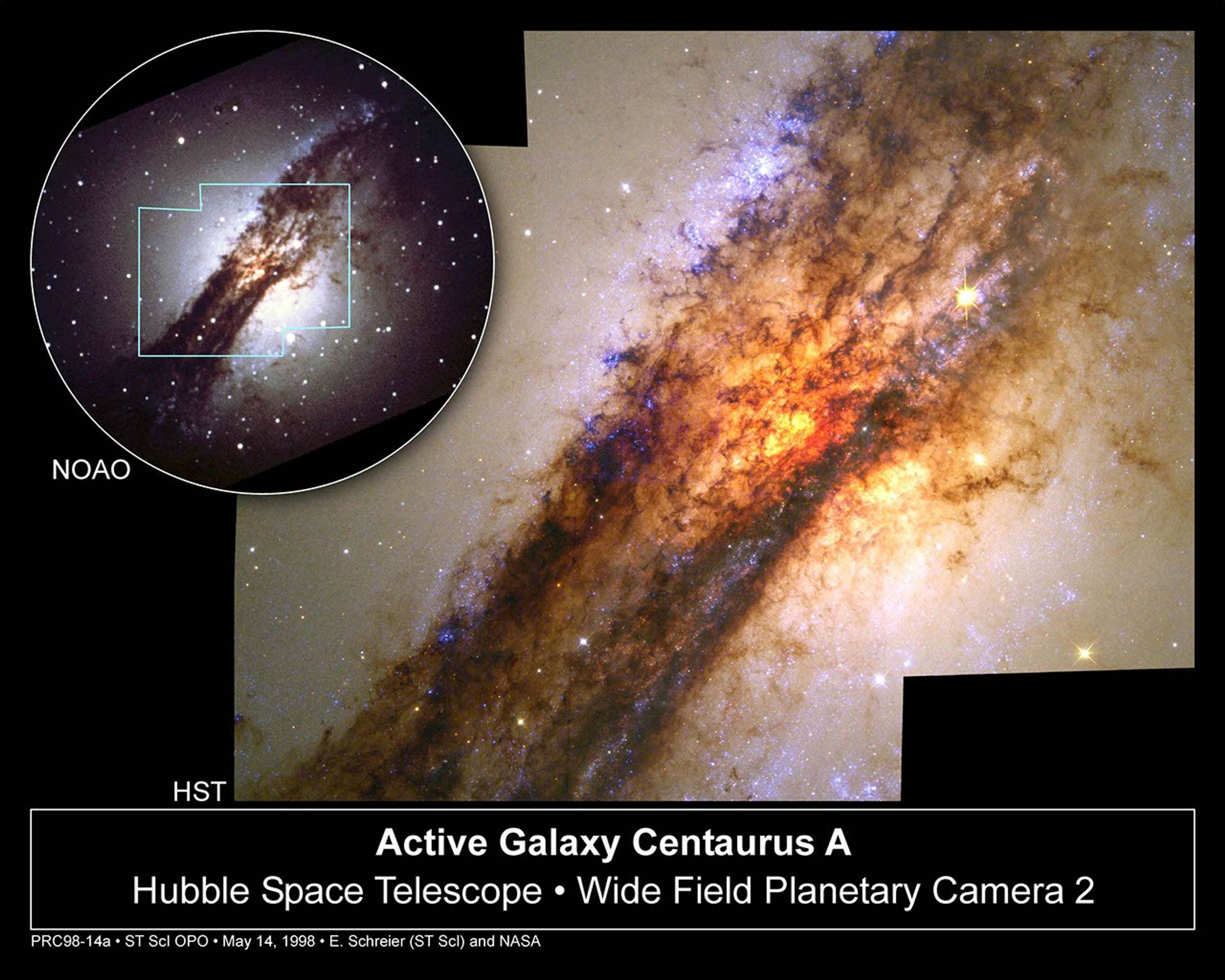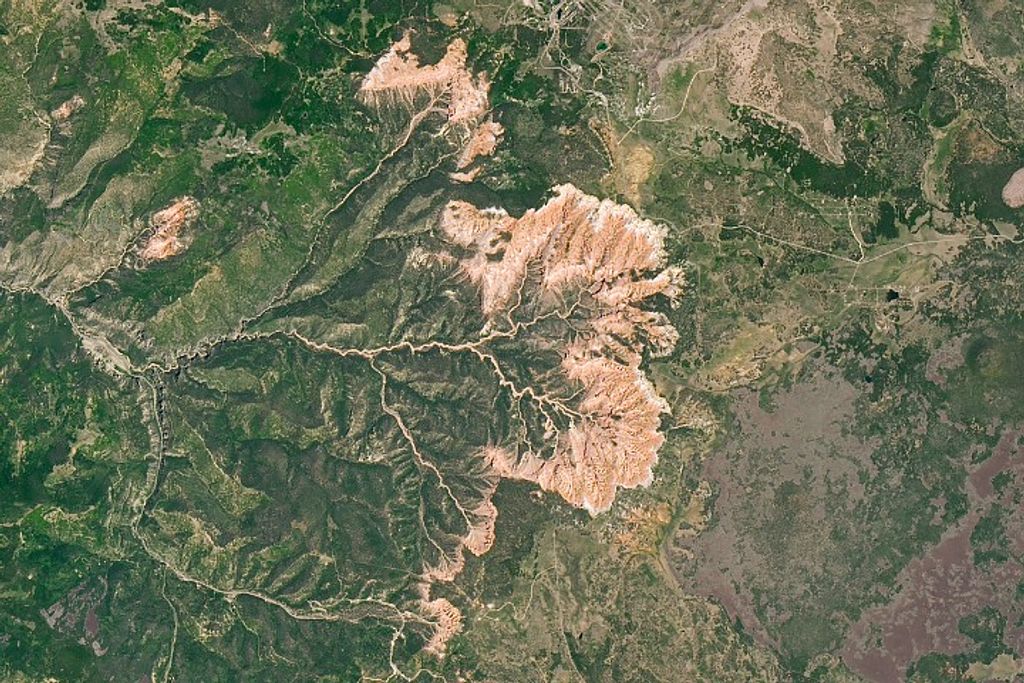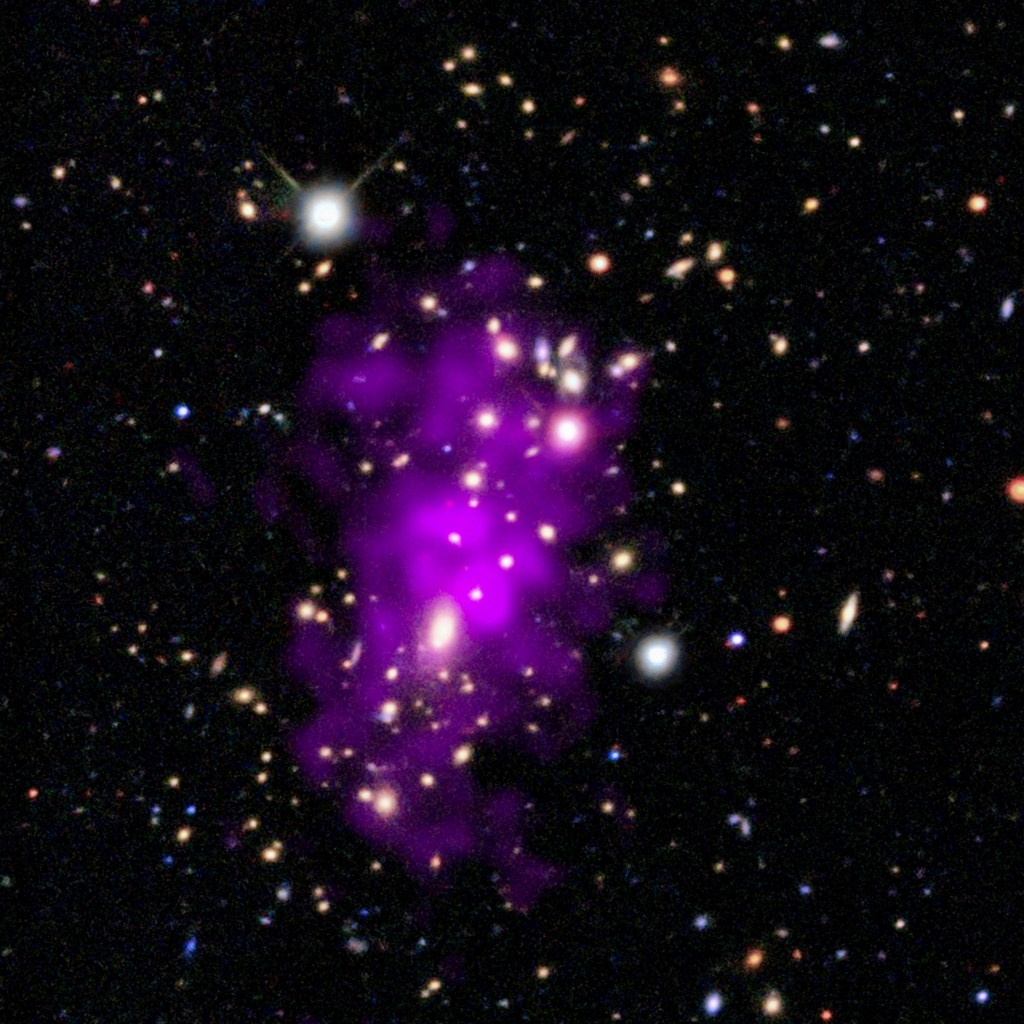1 min read
Centaurus A: the Inside Story

Astronomers have used NASA's Hubble Space Telescope to probe the core of the nearest active galaxy to Earth, Centaurus A.
[UPPER LEFT] - A close-up high resolution Wide Field Planetary Camera 2 image of the dramatic dust disk which is thought to be the remnant of a smaller spiral galaxy that merged with the large elliptical galaxy. The shock of the collision compressed interstellar gas, precipitating a flurry of star formation and giving the material a fleecy pattern. Dark filaments of dust mixed with cold hydrogen gas are silhouetted against the incandescent yellow-orange glow from stars behind it.
[LOWER RIGHT] - Hubble's Near Infrared Camera and Multi-Object Spectrometer was used to peer past the dust to discover a tilted disk of hot gas at the galaxy's center (white bar running diagonally across image center). This 130 light-year diameter disk encircles a suspected black hole which may be one billion times the mass of our Sun. The disk feeds material to presumably an inner, unresolved accretion disk that is made up of gas entrapped by the black hole. The red blobs near the disk are glowing gas clouds which have been heated up and ionized by the powerful radiation from the active nucleus.
The false-color NICMOS image was taken on Aug. 11, 1997 at a wavelength of 1.87 microns ("Paschen alpha"), characteristic of ionized Hydrogen.
About the Object
- R.A. PositionR.A. PositionRight ascension – analogous to longitude – is one component of an object's position.13h 25m 27.59s
- Dec. PositionDec. PositionDeclination – analogous to latitude – is one component of an object's position.-47° 1' 9.0"
- ConstellationConstellationOne of 88 recognized regions of the celestial sphere in which the object appears.Centaurus
- DistanceDistanceThe physical distance from Earth to the astronomical object. Distances within our solar system are usually measured in Astronomical Units (AU). Distances between stars are usually measured in light-years. Interstellar distances can also be measured in parsecs.10 million light-years
- DimensionsDimensionsThe physical size of the object or the apparent angle it subtends on the sky.18.2 (arc minutes). Magnitude: 7.0
About the Data
- InstrumentInstrumentThe science instrument used to produce the data.HST>WFPC2 (left), and HST>NICMOS (right)
- Exposure DatesExposure DatesThe date(s) that the telescope made its observations and the total exposure time.August 1, 1997 and January 10, 1998 (WFPC2), and August 11, 1997 (NICMOS)
- FiltersFiltersThe camera filters that were used in the science observations.NICMOS: 1.87 microns (Paschen alpha)
- Object NameObject NameA name or catalog number that astronomers use to identify an astronomical object.Centaurus A, NG 5128
- Object DescriptionObject DescriptionThe type of astronomical object.Active Galaxy
- Release DateMay 14, 1998
- Science ReleaseHubble Provides Multiple Views of How to Feed a Black Hole
- CreditE.J. Schreier (STScI) and NASA; Team members are: Ethan J. Schreier, Alessandro Marconi, David J. Axon, Nicola Caon, Duccio Macchetto ( STScI), Alessandro Capetti - (Osservatorio Astronomico di Torino, Italy), James H. Hough, Stuart Young ( University of Hertfordshire, UK), and Chris Packham (Isaac Newton Group, Islas Canarias, SPAIN)
Related Images & Videos

Turbulent Cauldron of Starbirth in Galaxy Centaurus A, With Ground View (inset)
NASA's Hubble Space Telescope offers a stunning unprecedented close-up view of a turbulent firestorm of starbirth along a nearly edge-on dust disk girdling Centaurus A, the nearest active galaxy to Earth. A ground-based telescopic view (upper left insert) shows that the dust...

Centaurus A: Feeding a Black Hole
Zoom Sequence: Ground-based image of Centaurus A, ZOOM into the Hubble Space Telescope WFPC2 Camera images of Centaurus A and its Nucleus, DISSOLVE in the HST NICMOS infrared image. The animation shows what is seen from the NICMOS image: inside the galaxy are a hot gas disk and...
Share
Details
Claire Andreoli
NASA’s Goddard Space Flight Center
Greenbelt, Maryland
claire.andreoli@nasa.gov











































